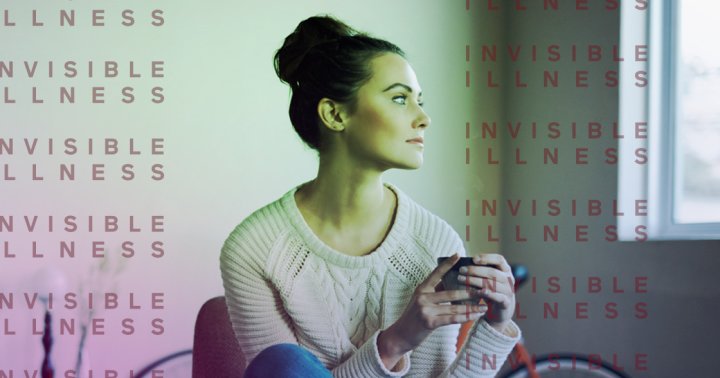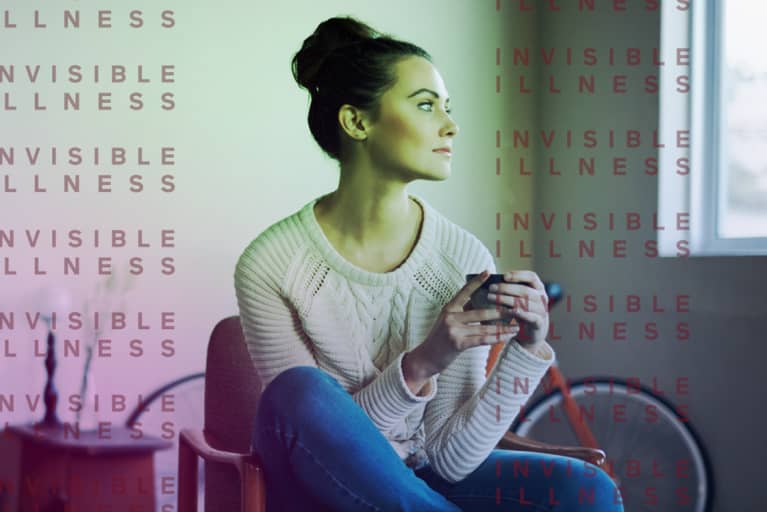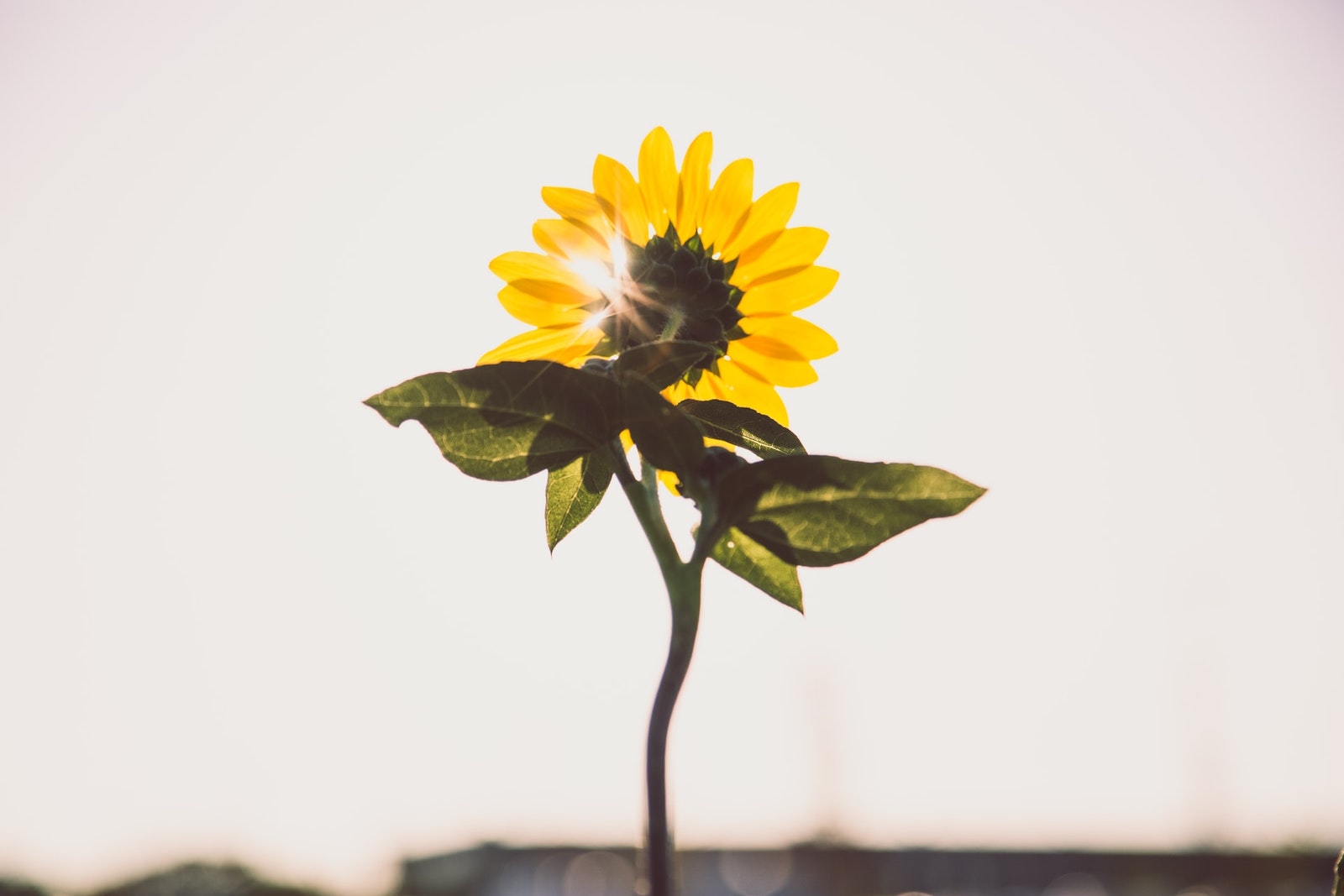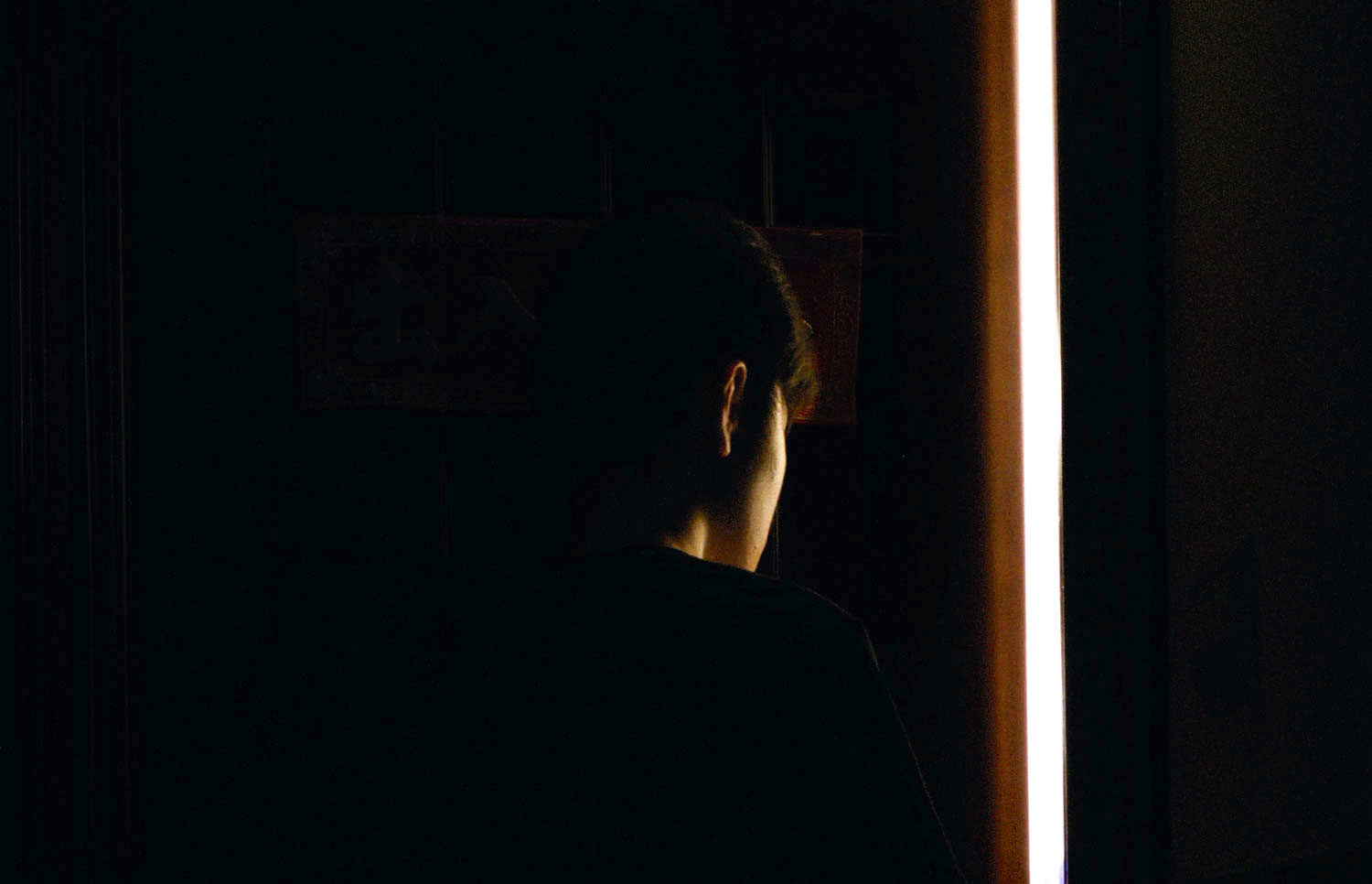I Suffered From PTSD Until I Got Specialized Care—Here's How I Pay It Forward
It all starts with therapy.

|

August 6, 2022 — 10:31 AM
While some health issues are visible to the outside world, many people face chronic conditions that don't have externally visible signs or symptoms—also known as invisible illnesses. In mindbodygreen's series, we're giving individuals with invisible illnesses a platform to share their personal experiences. Our hope is their stories will shed light on these conditions and offer solidarity to others facing similar situations.
Whenever I talk about my mental health journey I always start by saying that I'm one of the lucky ones. There's a lot of people in this country who still really struggle with their mental health and don't know that care exists. That's why I'm on this mission to change what care looks like so that everyone can become the lucky ones.
Trigger warning: This article includes mentions of sexual assault.
My struggles with trauma.
I grew up in the suburbs of Philadelphia with a fully intact family that did everything to support and protect me. I have the most incredible parents and brother, and really had a very privileged childhood.
Then, when I was 14 years old I went to a concert. At that concert, I was sexually assaulted. Afterwards I struggled with anxiety, depression, and PTSD—all the fun things that come along with a traumatic event.
Despite having incredible parents, it took them nearly two and a half years to find evidence-based care that treated my underlying trauma, as well as the manifestations of that trauma. When I was 17 years old, they discovered a brand-new residential treatment center in California. It was a last stop effort, and luckily that program saved my life.
I was in treatment there for 45 days. It was a residential treatment center which means that you live with the people you're in treatment with, and I was the second girl ever to be admitted to the program. I remember meeting my roommate and when she told me her story I thought, ‘Whoa, are we related? How are you so similar to me?’ Then, four other girls moved into the house and everyone who moved in had a similar story. This was the first time I really felt like I wasn't alone, which was incredibly beneficial to my healing process.
In addition, they used evidence-based trauma treatment which I had never received before. Things like EMDR (eye movement desensitization and reprocessing) which I had never done prior to being in residential treatment ended up saving my life. During my 45 day stay, I had an opportunity to recover. Most people who have complex PTSD struggle with it for the rest of their life. But for me, I haven't had any symptoms of PTSD since the residential treatment.
I was 17 when I left, and I went back home back to high school. I went to a new school for my senior year, and whenever I would meet anyone new I would tell them my story. It definitely did not make me the most popular girl, walking around leading with my trauma, but I thought it was important that everyone knew that help existed. I had lived in a space of believing that I was always going to be tormented and I was never going to be able to sleep through the night again—that I was going to struggle forever. But after I got access to treatment, I learned that all it took was evidence-based care and a community to heal.
How I used my experience to give back.
When I graduated from high school, I reached back out to the founder of the residential treatment center and asked him if I could intern for the summer before college. It was still the same small, six bed home, so I moved to California for the summer and subsequently spent the next 11 years working full time throughout college and after. I helped him grow it from a small treatment center into what's known today as the gold standard for residential care, and that was an incredible journey.
I got to witness so many people like me heal and make a full recovery, which was so inspiring and kept me wanting to continue to build that treatment center. But no matter how quickly we built, we could never keep up with the demand. Every single day we had more people on the waitlist than we had in treatment. When I left it was 300 beds, which means we could help a couple of thousand kids a year. But what we know is that in our country, there are millions of kids who are struggling and need access to care. I knew that building a residential treatment center for a million kids would be impossible and cost prohibitive, but I wanted to create something that was accessible to everyone so that everyone would be able to experience the same life saving care that I did when I was 17 years old.
There are many evidence-based practices for trauma treatment, and it's really about figuring out what works for you. I used to say that it was like throwing spaghetti at the wall and seeing what sticks. We can expose you to TF-CBT (trauma focused CBT) and that really works for some people. For me, I didn't love TF-CBT, but I loved EMDR which is eye movement desensitization and reprocessing. It's a form of psychotherapy that was developed in the 1980's but has only become popular recently, designed to alleviate the distress associated with traumatic memories.
You can actually deliver it virtually, which we learned during COVID, and it's just as effective. For me, a lot of somatic therapies were really helpful as well. I needed to learn how to be back in my body. Getting back into your body and feeling again is an important part of recovery, as long as you're safe and supported while doing that.
How I've been supporting my mental health recently.
Therapy, therapy, therapy. I believe that every single person should have a therapist. I also find it really cathartic to tell my story because it allows me to reclaim my power. It doesn't make me feel like a victim—it makes me feel like someone who had something bad happen, but I now really own it and I've used it to fuel my passion and purpose. In fact, it has also allowed me to connect with people who have been through similar experiences which, for me, is really healing to know that I'm not alone.
Therapy and connection are the two biggest things, along with advocacy work. I like being an advocate for other young people who have been through terrible things so I can help them heal. At the end of the day, it has to start with therapy. You need to have a licensed professional who's delivering evidence-based care, but I really believe that group therapy is magical. Everyone should have a group that they can go to outside of their individual therapy sessions and process their learned skills to deal with their trauma with other people who have experienced similar things.
That was the magic for me when I moved into a house with five other girls. It was so helpful to hear their stories and know I wasn't alone.
I wanted to recreate the community that I found during treatment, and that's what we've done with Charlie Health. Within this program, we pair people not just based on their primary diagnosis. Let’s say you have PTSD, but we can also get more specific. What do you want to work on? What do you want to process? And what are your preferences? Right now we have a group of 16 year old girls who all have experienced sexual trauma and all like cosplay. Because we have thousands of kids in our program, we're able to match people together in that intensive group therapy experience to allow for full recovery and healing.
From working in residential care, I recognized how limited access to quality mental health care was. Because we were always limited by the number of beds, we would have to turn kids away because of capacity, insurance, or financial responsibility. I wanted to create a program that democratized access for young people across the country to high-quality evidence-based care.
The only way to do that was through creating a virtual-first solution so that people who live in places like rural Montana and don't have a parent who can drive them to a therapist or don't have a therapist within 50 miles of their home can have access to high-quality clinicians and other people like them.
Today, our program is designed to be a step down from an ER, residential treatment center, or psychiatric unit as well as a step up for people who are only in therapy once a week or haven't gotten treatment and are profoundly struggling. We're working with kids and young adults (12-28 years old) who are in a mental health crisis and either can't afford residential treatment, can't access residential treatment, or can't access a provider that knows how to offer adequate levels of support.
A lot of invisible illnesses likely can't be fully cured, and are something you may have to struggle with forever. But there really is hope for mental illness. Treatment exists in the form of evidence-based care that can truly allow for a full recovery.
Reset Your Gut
Sign up for our FREE doctor-approved gut health guide featuring shopping lists, recipes, and tips
You are now subscribed
Be on the lookout for a welcome email in your inbox!
https://www.mindbodygreen.com/articles/i-suffered-from-ptsd-for-years-this-was-treatment-that-helped

 Astrong
Astrong 
































